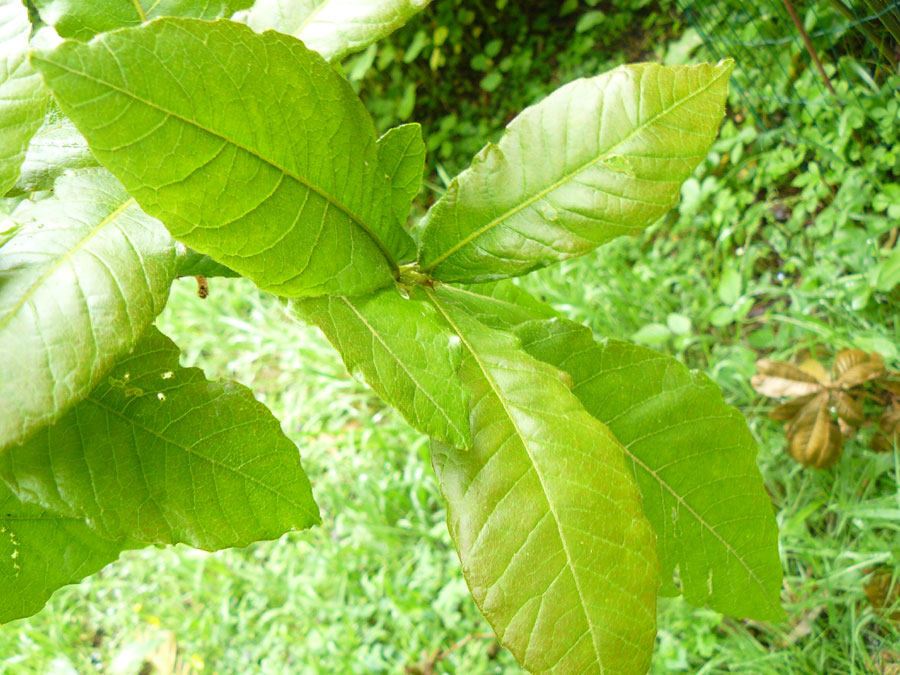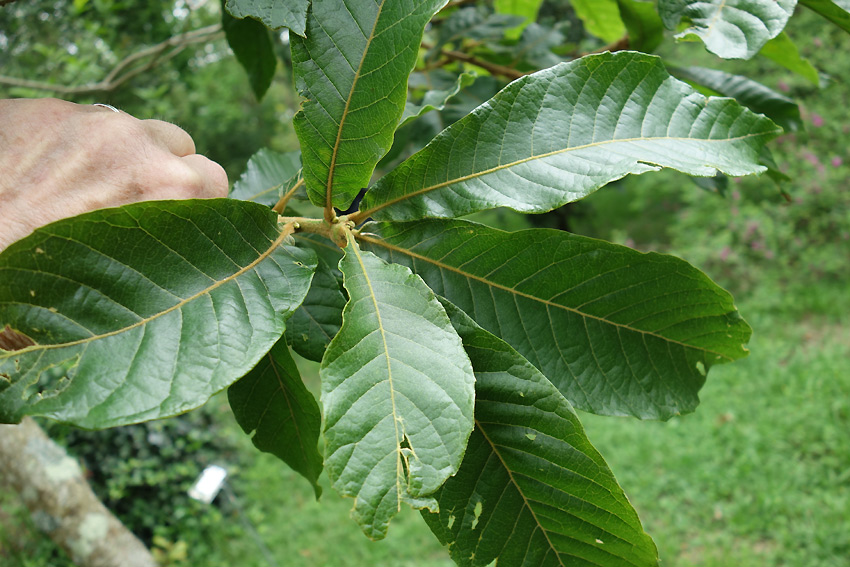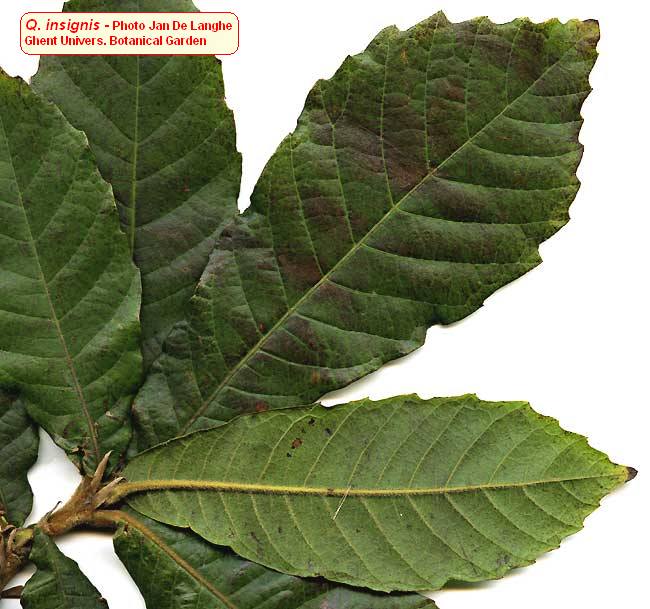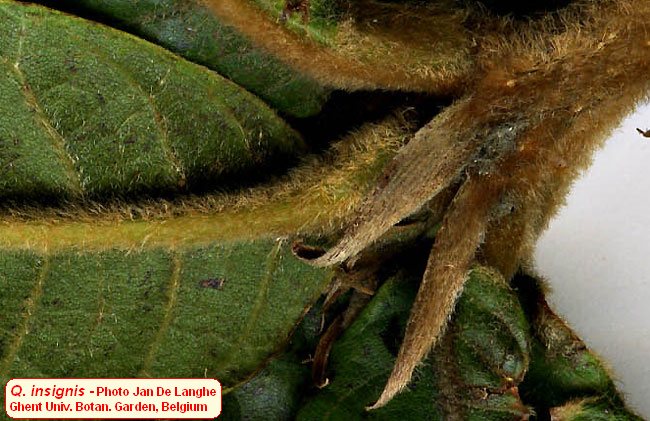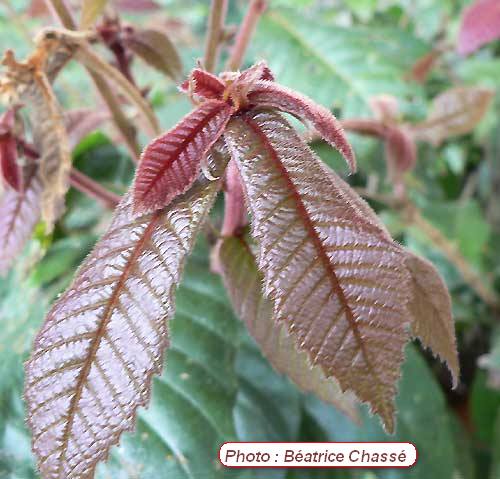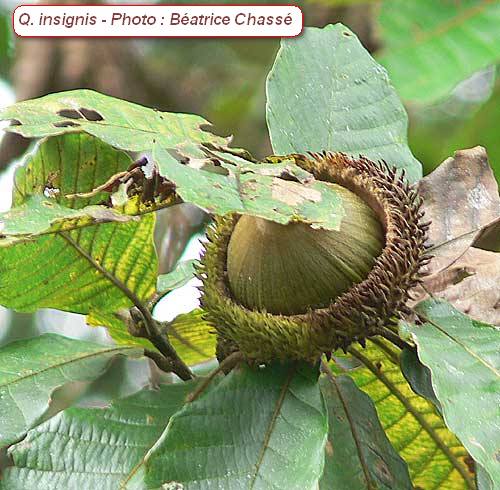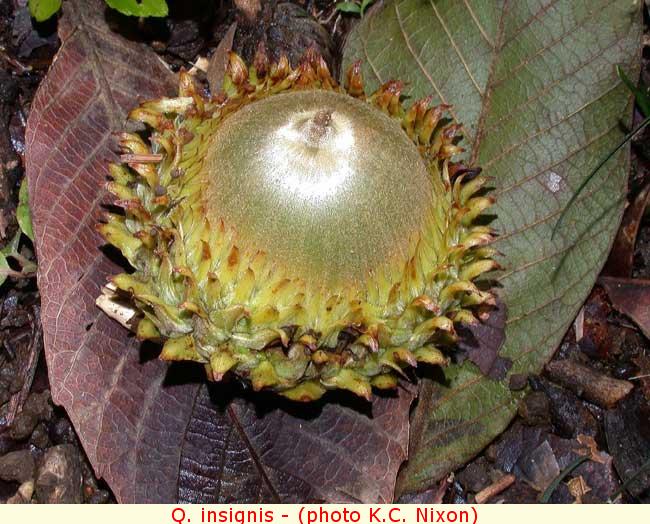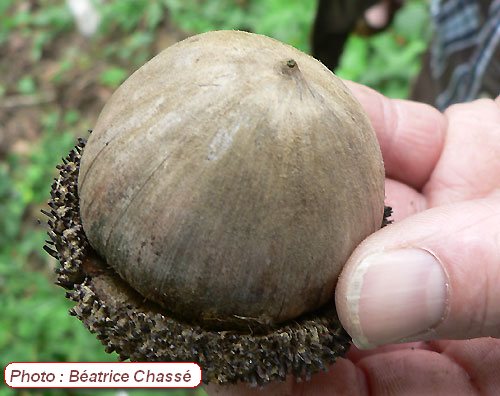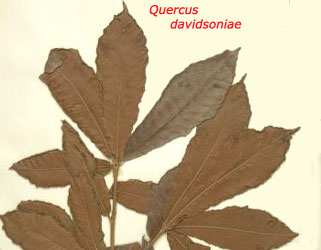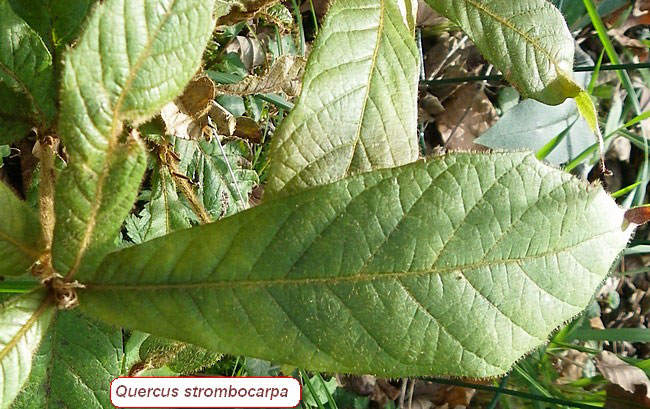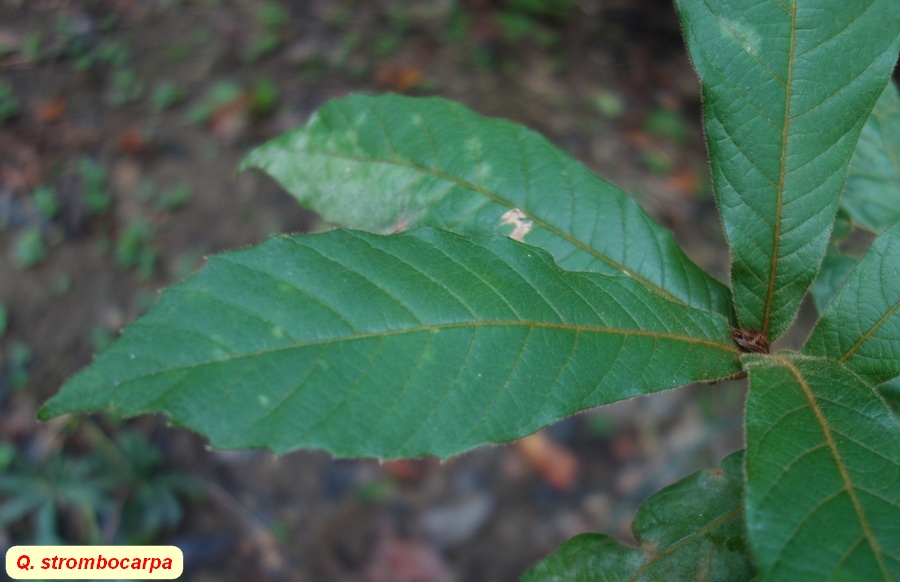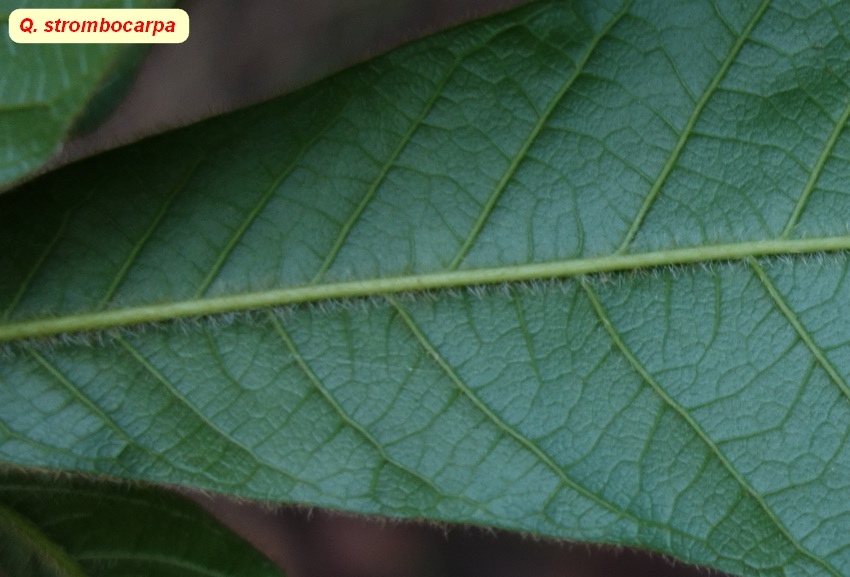| Quercus insignis | |
| Author | Mart. & Gal. 1843 Bull. Acad. Roy. Sci. Bruxelles 10(1): 219 |
| Synonyms | davidsoniae
Standl. 1940 schippii Standl. 1935 seibertii CH Muller 1942 Diagnosis here tomentocaulis C.H.Muller 1950 |
| Local names | encino bornio; |
| Range | Central
America (Belize, Honduras, Panama, Guatemala, Nicaragua, Costa Rica);
Mexico (Oaxaca, Veracruz); 200 to 2000 m; |
| Growth habit | to 30 m usually, but reaches 40 m with trunk to 1 m wide; trunk straight; crown rounded; |
| Leaves |
10-25
x 4-9 cm; semi-evergreen; oblong to oboval or elliptic; thick and stiff;
apex pointed shortly acuminate; base obtuse to cordate, often asymmetrical;
margin revolute, entire or remotely wavy or dentate-serrate, with 4-10
pairs of small mucronate teeth at apical 3/4 or from the base; dark
green adaxially, slightly lustrous, glabrous except stalkless, stellate,
shortly rayed hairs along midrib; pale yellow green beneath, somewhat
lustrous, glabrous or with some stalkless, stellate hairs mostly along
midrib; 10-20 vein pairs, pubescent; epidermis bullate and papillose;
petiole densely tomentose 07-2 cm long; |
| Flowers | March
to July; staminate catkins 9-11 cm long; rachis of pistillate inflorescence
bears 1 to 4 flowers; |
| Fruits | big flattened acorn, 3-4 cm long, 4-7 cm in diameter; solitary or paired; sessile or on short peduncle 0.5 cm; pericarp hairless inside; enclosed 1/3 by cup; cup turbinate, 4-8 cm wide, with silvery pubescent imbricate scales; maturing in 1 year from July to October; |
|
Bark, twigs and |
bark pale grey brown, scaly; twig stout, 4-6 mm thick, tawny and persistently pubescent, with numerous pale greyish lenticels; bud 4-8 mm, ovoid; stipules 7-15 mm long, sometimes persistent 1 year around buds; |
| Hardiness zone, habitat | not
hardy (zone 9); all types of soils; |
| Miscellaneous | --
A. Camus : n° 280; -- Sub-genus Quercus, Section Quercus, Series Leucomexicanae; -- Threatened (IUCN Red List Category : EN). -- Hybrids with Q.lancifolia , named Q.galeottii Mart. & Gal.1843; -- Actually Q. tomentocaulis differs from Q. insignis in having : shorter petioles (ca. 0.5 cm), stipules persistent 2 years, leaves toothed in the apical half, with abaxially simple and stellate trichomes on midrib and secondary veins, free scales on the cupule, acorns conical, and a very different habitat. |
| Subspecies and varieties |
Q.strombocarpa
Liebm. 1854 (A.Camus n° 281) Diagnosis here = Q. insignis var. strombocarpoides Liebm. 1869 closely related to Q.insignis : leaves 8-18 x 5-9 cm; acorn shortly conical, 4-5 cm long, enclosed 1/3 by cup; Mexico (Veracruz); |
| Pictures |
|
